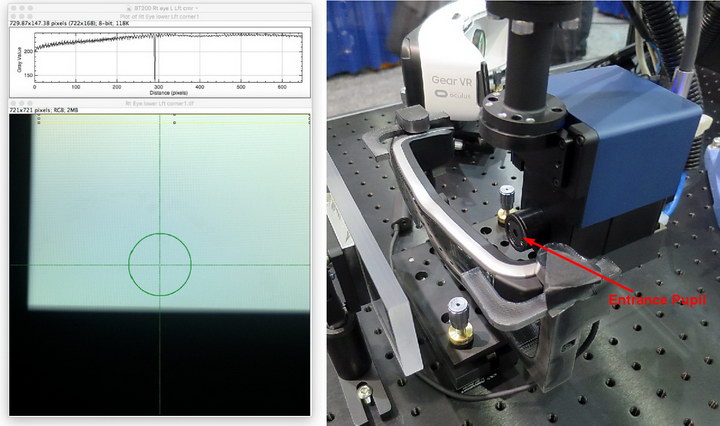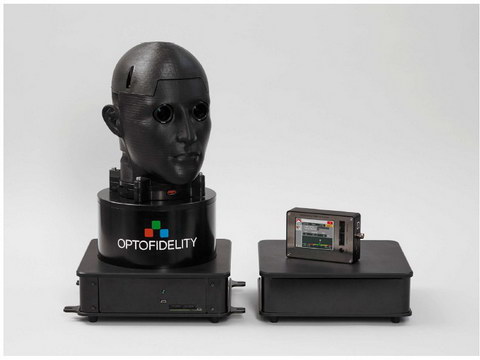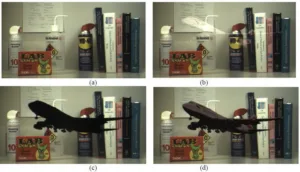There are special problems in the measurement of displays that create virtual images, especially NTE displays for AR and VR. I’ve already talked a little about the measurement of AR and VR displays in my Display Daily on AR/VR week. These four papers expanded on the issues and, mostly, gave solutions to the problems. Until the International Committee on Display Measurements (ICDM) gets around to writing NTE display measurement standards, you aren’t likely to go wrong following the methods presented by the authors in this section.
Papers 65.1 and 65.3 were concerned with measuring the color and brightness of NTE HMDs and they both emphasized the need to control the entrance pupil of the instrument and keep it entirely within the eye box of the display. In practical terms this means using an entrance pupil comparable in size to the pupil of the eye, about 6mm. Since this is much smaller than the entrance pupil of instruments designed for large area displays such a TV or computer monitors, the main problem encountered is low light levels in the instrument leading to high noise in the measurement.
Paper 65.1 was a distinguished paper and titled “Photometric and Colorimetric Measurements of Near-Eye Displays.” It was authored by a consortium of people from the University of Colorado, NIST, the Air Force Research Labs, Gamma Scientific, Photo Research and Centaurus High School. As a distinguished paper, the full text of the expanded version of the paper can be downloaded from the JSID website. Since Thomas A. Lianza from Photo Research was one of the co-authors of the paper and he is leading the effort at the ICDM to write standards for the measurements of HMDs, the techniques described in this paper can be considered authoritative.
Paper 65.3, titled “Spectroradiometric Measurements of Near-Eye and Head Up Displays” was written by authors from Gamma Scientific alone. It described an adaptor for Gamma Scientific spectroradiometers where the entrance pupil was controlled, allowing it to make detailed measurements of NTE displays, as shown in the image.
 Left: Captured image of the lower left corner of the virtual image of the BT200 glasses along with an analysis of the luminance drop off to the left of the virtual image. (Image: Gamma Scientific) Right: Gamma Scientific spectroradiometer in the I-zone mounted on a 6-axis robot that allows it to measure any portion of the virtual image of see-through AR systems or light-blocking VR systems. (Photo credit: M. Brennesholtz
Left: Captured image of the lower left corner of the virtual image of the BT200 glasses along with an analysis of the luminance drop off to the left of the virtual image. (Image: Gamma Scientific) Right: Gamma Scientific spectroradiometer in the I-zone mounted on a 6-axis robot that allows it to measure any portion of the virtual image of see-through AR systems or light-blocking VR systems. (Photo credit: M. Brennesholtz
Paper 65.2 was titled “Optical Attachment to Measure Both Eye-Box/FOV Characteristics for AR/VR Eyewear Displays.” This paper was written by a consortium of authors from the Japan Electronics and Information Technology Industries Association, Konica Minolta, Otsuka Electronics, Asahi Glass, ColorLink Japan, Canon, JVC Kenwood, Japan Display, Dai Nippon Printing, LG Display Japan, Fujifilm, and Hitachi. The paper describes methods for measuring the uniformity and size of the eye-box and FOV of NTE displays.
Paper 65.4 was titled “Novel Methods for Measuring VR/AR Performance Factors from OLED/LCD” and was presented by Kimmo Jokinen of OptoFidelity Inc. This was a system that primarily measured temporal performance factors such as motion blur and latency in the display system. The display to be tested would be mounted on a replica human head. As the head was rotated about a vertical axis, simulating the head motion that is typical of VR, it could measure motion latency.
 Artificial head on a motion base to measure “motion-to-photon” latency in HMDs. (Image: Opto Fidelity)
Artificial head on a motion base to measure “motion-to-photon” latency in HMDs. (Image: Opto Fidelity)

